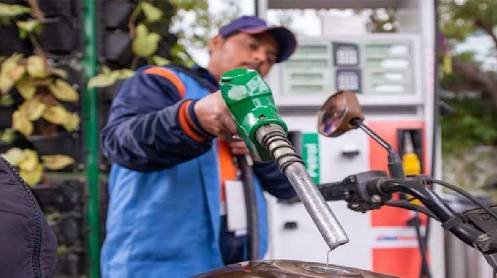ISLAMABAD: Already burdened masses may experience a decrease in petrol prices by Rs 10.08 per litre, while the price of high-speed diesel (HSD) is estimated to surge by Rs 3.66 per litre in the second half of July.
According to sources, petrol prices are expected to witness a decrease of Rs 10.08 per litre, while the price of high-speed diesel (HSD) is likely to increase by Rs 3.66 per litre for the remaining fifteen days of July 2023. Similarly, the price of kerosene oil is expected to see a hike of 73 paisa per litre, and light diesel oil (LDO) may experience an increase of Rs 1.43 per litre during the same period. Additionally, the petroleum levy (PL) on petrol is likely to increase to Rs 60 per litre, compared to the current rate of Rs 55 per litre, as per the sources.
If approved, the decrease in petrol prices would result in an ex-depot price of Rs 251.92 per litre, compared to the current market rate of Rs 262 per litre. However, the price of diesel (HSD) could soar to an ex-depot price of Rs 264.16 per litre, rising from the current market rate of Rs 260.50 per litre. These potential changes have raised concerns among consumers who heavily rely on diesel for transportation and power generation.
In contrast, kerosene prices are expected to witness a hike of Rs 0.73 per litre, reaching an ex-depot price of Rs 171.78 per litre. Furthermore, Light Diesel Oil (LDO) might experience an increase of Rs 1.43 per litre, bringing the ex-depot price to Rs 155.65 per litre. These adjustments could impact households relying on kerosene for cooking and LDO for various industrial processes.
The fluctuations in fuel prices pose challenges for both consumers and industries, as they impact transportation costs, power generation expenses, and household budgets. The proposed changes in petrol and diesel prices highlight the need for individuals and businesses to adapt their budgets and adjust their consumption patterns accordingly.
The final decision on the revised fuel prices for the second half of July will be made by the finance ministry, taking into account various factors such as international oil prices, exchange rates, and local market conditions. The potential changes in prices reflect the dynamic nature of the fuel market and its impact on the economy and everyday lives of the citizens.






